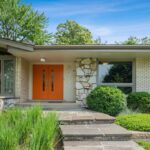
Buying a Home with Character: Houses Built Before the 1960’s
So you want to buy an older home. One with lots of character? There are some truly amazing displays of architecture in some of the older homes. Some beautiful Victorian, Craftsman, Tudor, Cape Cod, and many other popular builds of the past. Now the excitement is having these older homes function for us in our modern lives.
Electricity didn’t become popular use in homes until the 1930’s where some homes still did without. In homes built prior to the 60’s, it’s common to see undersized electrical supply. Some of these homes had 60 and 100 amp supply, which is well under todays home. While the service may be usable at the time, it may be to small for the demands of a modern home.
Although electrical use was popular during the 1930’s, it definitely was behind todays standards. Today we have grounded outlets, GFCI’s, AFCI’s, dimmers, USB plugs and much more to fit our modern needs. It would be good practice to have a licensed electrician evaluate the electrical system for safety and function before moving forward.
Wood is our most popular building material for residential construction in Texas. Wood can be effected by wood rot, sun, fungus, insects, and weather. It’s important to evaluate the structural performance of an older home and how it carries the load it supports. It is recommended to paint exterior wood every ten years to prevent moisture deterioration.
Lead and asbestos can also be common issues found in older homes. These issues can be hard to identify without evaluation by a lab. Most issues from lead paint are from ingestion, and asbestos does most of it’s damage when you breathe in fibers in the air. We recommend educating and consulting with a professional in this area about any lead and asbestos concerns as this is outside the scope of practice for a home inspector in Texas.
One consideration to keep in mind is that a lot of these homes were built without the intention of having an HVAC system. Low sloping roofs and many homes without attic space available make it difficult to evaluate or install ducts for cooling or heating the home. Also the lower slopes make the roofs more susceptible to moisture penetration.
As with any age home, we recommend having a licensed professional look at the property. Not all risk can be avoided, but knowledge of your homes components can prepare you to be a home owner of this age of home.
The information provided on this website is for home education purposes only and does not reflect what is covered in a home inspection. Some issues or deficiencies may be outside the scope of practice for the home inspector or not readily identifiable. If you have any questions regarding what is covered in the home inspection, please contact us.






